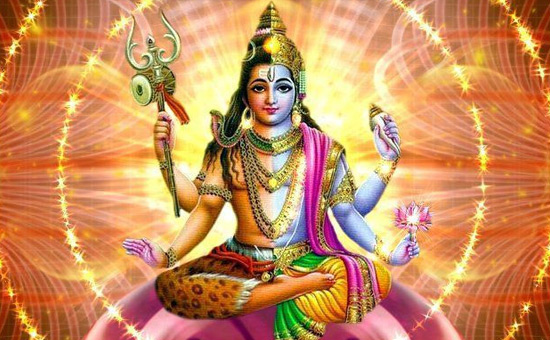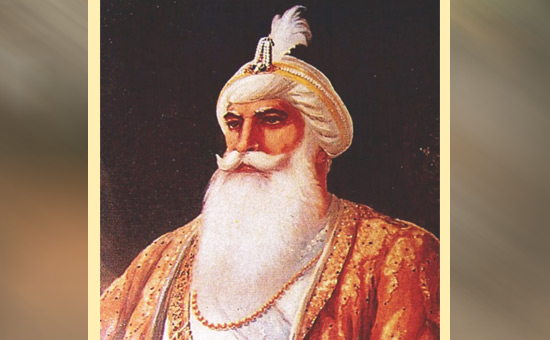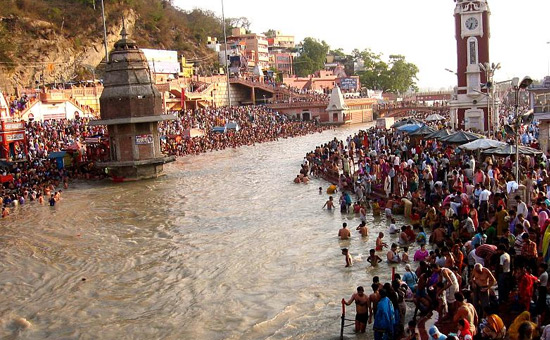- This part covers God proposes and
disposes, stories of the brave Jassa Singh Ahulwalia and Ganga Dussehra.
Part One covered Guru, significance of
Ganga Saptami and Sambaji Maharaj and son of Shivaji. Part Two covered Mohini Avatar, Tiger stories Ayyappa and Mother’s Day. Part Three tells you stories of Kamadhenu,
Sita Navami and Narasimha Jayanti. Part Four is about Buddha Purnima,
Athithi Devo Bhava and Tenzing Norgay. Part Five is about destiny-how karmas can
alter it, animal sacrifice and the power of surrender. Part Six
covers do not Wait for tomorrow, The Strange Prophecy and Know the Value of
Money. Part Seven
covers Ravana & Ma Kali, Naama-Japa and Gratitude. Part Eight
covers This Too Shall Pass, Child Freedom Fighters and Ekalavya.
Why did I start writing these Stories? As a mother of three I have realized that
many children are deprived of hearing tales that are Indian in origin. This
could be for various reasons, an important one being that parents themselves do
not know these tales.
The desire to learn English and about
Western Nations meant that atleast two generations were fed tales from the West
namely Sleeping Beauty, Cinderella, etc. Because of this when you ask a child
to write an essay of their favourite character they will write about Santa
Claus and Snow White but not Shivaji.
So I took it upon myself to write short stories about India’s cultural heritage. The stories have been written in such a way that they can be read to children. At the same time I added snippets of our culture, rituals, shlokas, food, etc. so that children get to know about them. Must add that these stories are not meant to be scholarly pieces of work.
God Proposes and God Only Disposes
Also
Mahadev and MahaVishnu are great friends too. On some rare occasions they get together and go around the world (bhulok brahmaN) to see how their devotees (Bhakt) are doing. Once they were together and they spotted an old man walking alone towards his house. He was saying ‘Narayan, Narayan’ without any expectation. But he seemed worried. Shiva asked Vishnu, “This man seems to be Your Bhakt but still he is worried. Why is that? Do You not take care of Your bhakts?” Vishnu smiled and replied, “I take care of my devotees, but this man is simply worried about his old age. He has no wife or children to look after him and he is poor. So he feels that without money, no one will care for him in his old age. He has a lot of imaginary problems.”
Shiva felt bad and He told Vishnu, “If money is the problem, then I will give him enough to last his lifetime.” Vishnu wanted to stop Mahadev, but He knew that Mahadev was Bholenath and Ashutosh – very simple and large hearted too. Mahadev in the meantime found a good hollow stick which could double as a walking stick. He filled it with golden coins and kept it in the path of the old man so that he would find it.
 Shiva Vishnu.
Shiva Vishnu.
But this man had started imagining that soon he would go blind. So he thought, “Soon I will go blind. Then I will not even know how to walk. Let me start walking without seeing, so that I can get some practice now itself, when I can see.” So he closed his eyes and started walking. He missed the stick. Now Shiva was very upset. Vishnu saw that His dearest friend was upset and He told Shiva, “Don’t worry … You want him to be wealthy – so be it. He will lead a comfortable life from now on.” Vishnu picked up the stick and kept it at a small distance from the old man, on his path. Then, He sent a hissing snake close to the stick.
The old man heard the hissing of the snake and got afraid. He opened his eyes and saw the stick. He quickly picked up the stick thinking that he will throw it on the snake to frighten it. He had barely thrown the stick, when the snake disappeared … but at the same time, the stick broke into two and the golden coins fell out. The old man was overjoyed! He quickly collected the coins into his bag and singing “Narayan, Narayan”, praising Vishnu, he went home. (Needless to say, he led a comfortable life till the day he faced death.)
Shiva was pleased with Vishnu and He said, “This is why You are my dearest friend … You care for everyone’s feelings and grant the unspoken wishes too.”
Jassa Singh Ahulwalia
Do you know that there is place in Lahore, called Ahlu? Those who were originally from this place are called Ahluwalia. In Bharat, a lot of surnames are made up from the place of origin (for e.g. Ahluwalia, Gujarati, Hosamane) or extent of their learning (for e.g. Dwivedi, Trivedi, Gyani) or based on profession (for e.g. Gandhi-perfumers, Kapadia, Teli) and so on…
Sardar Jassa Singh was born to a religious
Sikh family in 1718. Unfortunately his father died when he was only five years
old. His devout mother took him to Delhi to see Mata Sundari who was the widow
of Guru Gobind Singh. Mata Sundari loved Jassa Singh as her own son and listened
to him reciting the Gurubani. When it was time to return to Punjab with his Mama (mother’s brother), Mata Sundri blessed him and gave him a sword, a mace and a shield. She predicted that someday he would become an eminent leader.
Today we shall read about a very special
Ahluwalia. He is none other than Sardar (Nawab) Jassa Singh Ahluwalia. In 1761,
Ahmad Shah of Afghanistan defeated the Marathas in the 3rd Battle of
Panipat. He and his soldiers were returning with 2,200 Maratha Hindu women,
whom they wanted to ravage and sell as slaves. The relatives of the Maratha
women went to the Sikhs, who were having their bi-annual meeting at Amritsar,
and pleaded with them to rescue their women.
Sardar Jassa Singh gathered volunteers immediately, caught up with the Afghans at River Sutlej at Goindwal, rescued the women and had them escorted to their families. This action shows his courage, swiftness, military acumen and chivalry … After this he was called “Bandhi Chhod” ie one who liberates others from imprisonment.
 Jassa Singh Ahulwaliaji.
Jassa Singh Ahulwaliaji.
Ahmad Shah, who was deprived of the women
for his harem, was ruthless and violent. He was not one to sit quiet. He took
his revenge in 1762 - Waddaa Ghalugharaa
i.e. a big genocide or massacre of the Sikhs. In February 1762, Ahmad Shah
Abdali Durrani came to attack with a large army, huge armaments and
artillery. Joining him was Zain Khan of Sirhind with 20,000 men and
artillery. About 25,000 to 30,000 Sikhs were slaughtered and Jassa Singh ji got
22 injuries on his body.
Not satisfied with having killed so many
innocent Sikhs, Ahmad Shah did the unthinkable - he
blew up the Hari Mandir and destroyed every brick there. Then he
polluted the sacred tank by slaughtering cows and putting their dead bodies in
the tank. The Sikhs were furious.
In October 1762, at the festival of
Diwali, a 60,000 strong army of the Sikhs gathered at Amritsar and resolved to
recover the honor and wreak vengeance. It was the day of the solar eclipse.
Ahmad Shah marched with a strong force from Lahore to Amritsar on 16th October
to destroy the Sikhs. But the brave Sikhs under the guidance of Jassa Singh
Ahluwalia attacked the enemy without caring for their lives.
The Afghans returned to
Lahore under the cover of darkness at night. The Sikhs obstructed Ahmed Shah’s passage at the river Ravi and attacked him from close quarters. Ahmed Shah ran away to Afghanistan. Zain Khan who had helped Ahmed Shah was killed and Sirhind came under the jurisdiction of the Sikhs. Ahmed Shah offered to make Jassa Singh the ruler of Punjab! After hundreds of years of Islamic rule Punjab was fully under the Sikhs. Who was scared of the Afghans?
The money that the Sikhs got as a tribute
from Sirhind was used by Sardar Jassa Singh to repair the Hari Mandir. The devout
Sikhs dug out and cleansed the Sacred Tank and repaired the holy temple in
1763.
Sardar Jassa Singh was not after wealth or
power. He was a gentle but courageous son of Punjab who never
murdered
prisoners in cold blood. No maltreatment of women in areas was allowed where
his armies operated. Enemy soldiers were allowed to go free if they laid down
their arms. He was against tyranny of the Muslim invaders, never allowed cow slaughter and the Mullah’s call for evening prayer, both of which were banned in his jurisdiction.
Sardar Jassa Singh died in 1783. As
a rare gesture for his services to the community, he was cremated within the
precincts of Hari Mandir, near Burj Baba Atal Sahib, where his Samadhi exists
to this day. Pranams. Waheguruji da Khalsa, Waheguruji di Fateh!
To see pictures of Hari Mandir or
Golden Temple
Ganga Dassera (another
story of Ganga)
Have you heard of a river flowing out of the ears of a Rishi? Yes, this is what happened to Ganga – she was swallowed by a Rishi called Jahnu. Why? Because she was very naughty.
Ganga was brought down to Earth from Heaven by Bhagirath. For this he had to do very difficult Tapasya, so much that after that day, whenever anyone does the most difficult task, it is called “Bhagirath Tapasya”. Ganga was always a naughty girl. Once when Rishi Durvasa was visiting Brahma, his dhoti flew because of the wind and he found it difficult to control. Ganga saw this and started laughing and giggling. Rishi Durvasa got so angry that he cursed her that soon she would have to leave Brahmalok and go down to Earth as a river.
Thanks to Bhagirath’s tapasya, Ganga finally came down to Earth. Just before leaving Brahmalok, she saw Mahadev on Mount Kailas. Playful that she was, she thought that when flowing down, she would come down with so much force that she would sweep Him also off His feet, along with everything that she touches. Shiva knew exactly what was running through her mind and He felt that it would be necessary to discipline her, else she would destroy everything. So He caught her in His jata (hairlocks) so tightly that Ganga could not escape. Now Bhagirath was almost heartbroken. He started praying to Shiva to release her. Shiva was pleased with Bhagirath’s devotion and tapasya and in no time Ganga started flowing from Shiva’s locks. She was now twice as holy. Because she flowed out of Shiva’s Jata, she is also called Jatashankari. Where she flows slowly with a ‘Mandh gati’, she is called Mandakini.
 Ganga Dassera.
Ganga Dassera.
But then again on her path, she saw Rishi Jahnu doing a Yagya (Homa or fire ritual). Naughty girl that she was, she decided to wash away the Yagya. Rishi Jahnu also understood what was in her mind, and swallowed her. Again Bhagirath prayed to Rishi Jahnu to free her. Rishi Jahnu understood the importance of Ganga flowing up to the sea and so freed her. She came out of his ear. Because Ganga came out of Jahnu’s ears, she is called Jahnavi. She became more holy.
Since she came to earth because of Bhagirath’s Tapasya, she is also called Bhagirathi. She is also called Alaknanda and she flows at Badrinath by this name. Both, Bhagirathi and Alaknanda are known to be the source streams of the Ganga. She meets the Sea at Bay of Bengal. Did you know that the sea and the ocean is called Sagar and MahaSagar because of King Sagara who was Bhagirath’s great-grandfather?
Author is
a mother to three children and writes on Spirituality, Women Empowerment and
National Affairs. Her articles are published on Indusscrolls.com amongst
others. She believes in the cause of the Indian Breed of Cows and is a follower
of Shree Ramachandrapura Matha, Karnataka.
To read all articles
by author